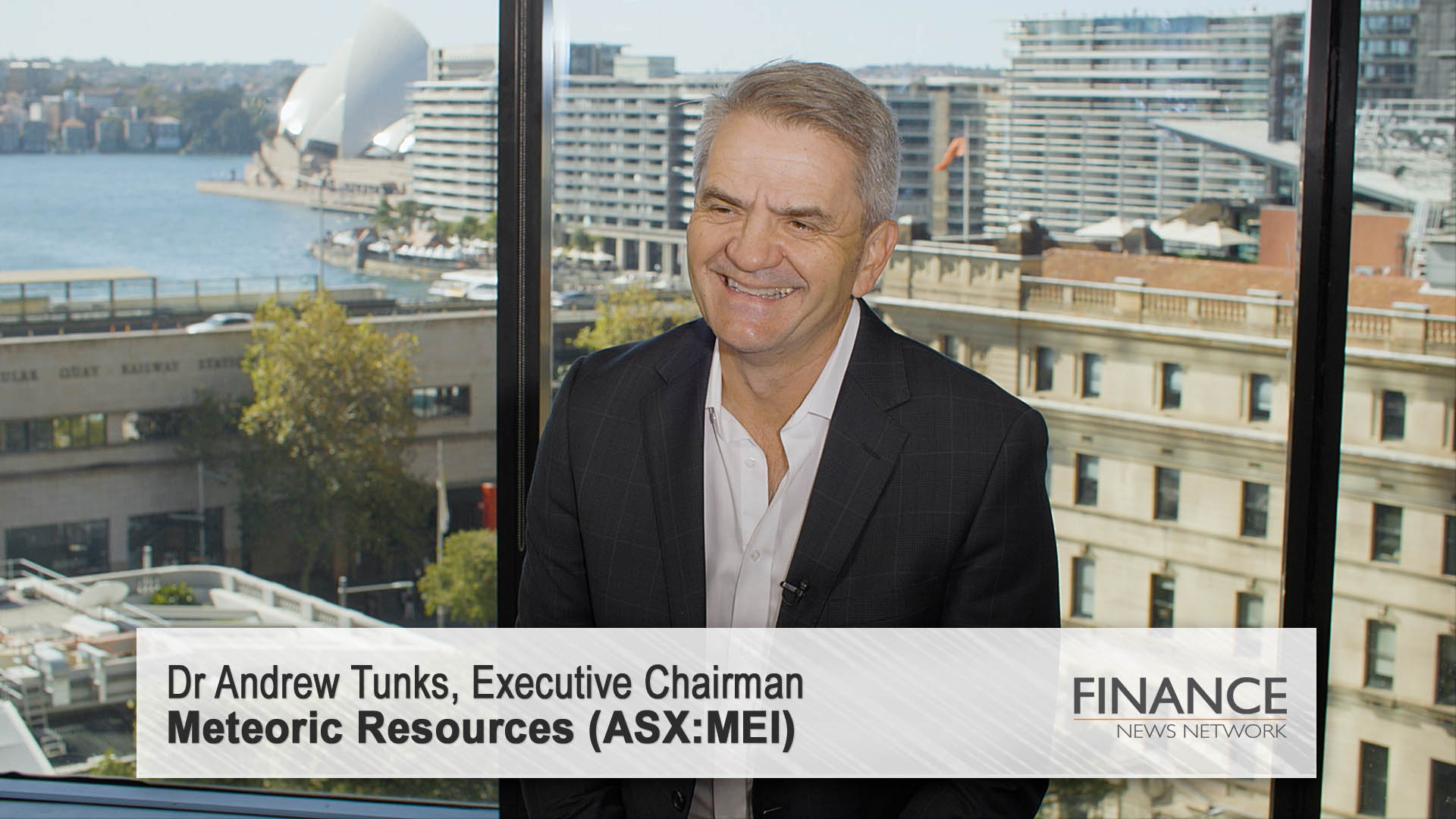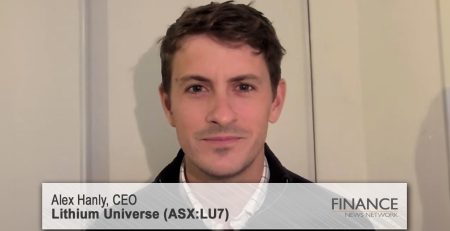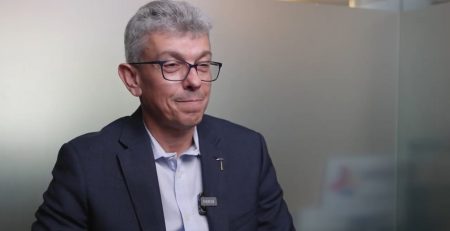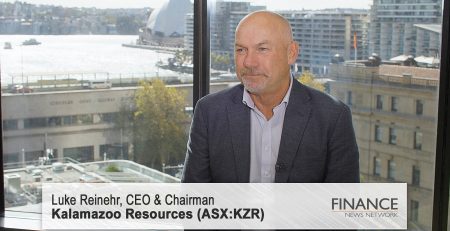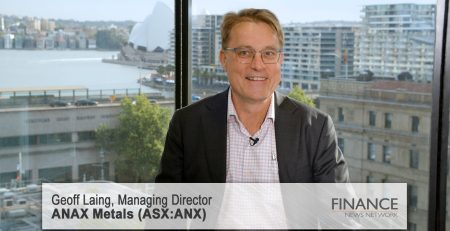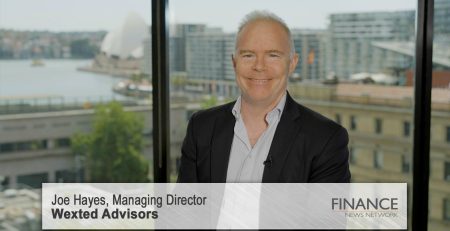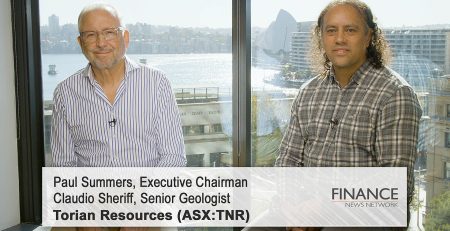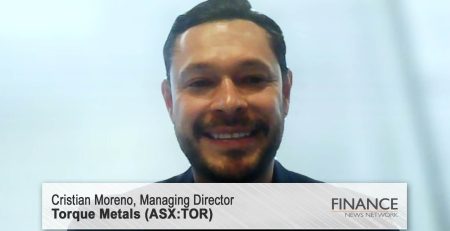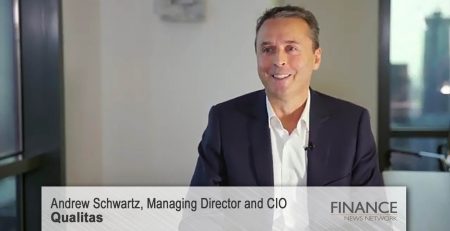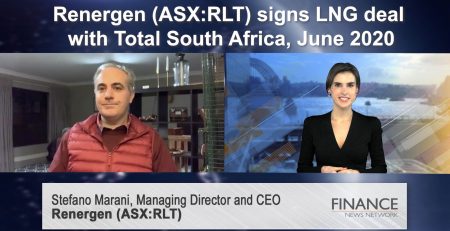The world’s highest-grade ionic clay
Dr Andrew Tunks, Executive Chairman of Meteoric Resources (ASX:MEI), provides an update on the company's progress, discussing its transition from gold to rare earths, the advantages of ionic clay over hard rock deposits, and promising early results.
Tim McGowen: We're talking today with Meteoric Resources (ASX:MEI). It's got a market cap of $261m. We have with us the Executive Chairman, Andrew Tunks. Andrew, welcome to Sydney. Thanks for your time.
Andrew Tunks: It's great to be here.
Tim McGowen: Nice day we've put on for you too.
Andrew Tunks: Yes.
Tim McGowen: For those potential investors who don't know the Meteoric Resources story, can you give us an update?
Andrew Tunks: Sure. So, typically, or over a long period of time, Meteoric has been a junior gold explorer, and late last year we transitioned. We found what we believe to be an amazing project, and we've entered into that project in late 2022. It's a rare earths project in southern Brazil about two hours north of Sao Paolo. And I think it has the hallmarks of being a globally significant rare earths project.
Tim McGowen: And how did it come about, taking ownership of that project?
Andrew Tunks: Oh, well, I suppose it really reflects the fact that we've been in Brazil for a long time and we've done a couple of deals in Brazil. We've been exploring for gold, and we had quite a bit of success on the gold front. And, ultimately, though, the project was in the Amazon, it was a difficult one for us to develop, particularly… And COVID changed our approach on that. So, we made a sale of our gold project to a private equity group in Brazil, and that generated a lot of local media for us. It was a good deal for both parties, and it generated a lot of local media, and we came to the attention of the group that owned this land.
And so they're a family company. They've been mining in the area for 110 years, and traditionally they've mined the clay and they've been making house bricks out of the clay, and that business as third-generation family company. And they've morphed over those years from the house bricks to what are called refractory bricks. They're the bricks that go inside furnaces, very high temperature, and kilns. And so they were running that project, they were mining the clays. And, at some stage, probably about 15 years ago, they realised that the clays were enriched in rare earths, and they did a lot of exploration themselves, and then ultimately quite a bit of exploration through the Japanese group, JOGMEC, the government group.
And JOGMEC pulled out at the start of COVID and put money into Mount Weld, Lynas (ASX:LYC), and I think that they felt that was a closer window. They needed rare earths in Japan, and they wanted a sure supply. So, the Togni company were left without a partner. And through our relationships in Brazil that we'd built up over the years, we got an introduction to them, and we managed to secure the deal, which is company-changing for us.
Tim McGowen: And clays can be based… Or rare earths are based in clays. Is there any kind of components within that clay that make it, from a production perspective, easier to mine?
Andrew Tunks: Yeah, absolutely. So, effectively rare earth deposits — and this is a really important in distinction for your investors — rare earth deposits form in two types. So if you looked at Lynas, that's the primary — the rare earth minerals are in the rock where they formed. And these clay ones are effectively those deposits, but nature has weathered them. It's turned that rock, you know, through the action of water and oxygen over millions of years, and it's weathered it. So now we're in a clay zone, and the rare earths that were in the minerals inside the primary rock have now been released into the clay.
The big distinction between the clay deposits and the hard rock deposits, like Mount Weld, is that they can be very metallurgically… Hard rock deposits are metallurgically difficult. You require very intensive acid conditions, and the capital costs have blown out to over well over a billion dollars for a hard rock, rare earths project. The clay deposits in comparison are lower grade, but can have very large tonnes. There's a couple of deposits approaching a billion tonnes around the world, and they are lower grade, but they have a much easier metallurgical process route.
And they don't — and this is the other big distinction — they don't tend to have uranium and thorium. And so uranium and thorium have obviously been a huge issue for Lynas, let's say, and that's why they built their plant in Malaysia. But the clay deposits don't have uranium and thorium.
And so easier metallurgical processing, no radionuclides, leads to a capital cost of around… For us, we estimate around $200m. Now we haven't done that study yet. That's just a peer comparison.
Tim McGowen: So, in terms of work done — you've just put out a JORC-compliant resource estimate — so how does the project stack up compared to others globally?
Andrew Tunks: Well, to be honest, and this was evident from to us when we started looking at it, it is the premier project in the clay ionic space in the world. It is the highest grade, it has the most contained metal, and that's on our first… that's on our maiden resource.
Our maiden resources is based on all the work that JOGMEC did, and that was private between the private group and JOGMEC, was never released. But they did 1,300 holes, 13,000 samples. We've collated all that data, brought into a resource, but it's not our own work. One of the things that was obvious to us is that 85 per cent of the holes finish in very high grades. They just drilled it inappropriately. Because of the nature of these clay deposits, they're hard to drill. And Australia have the premier technique for this. We've learned how to drill these clay deposits looking for gold, you know, supergene gold deposits in the west. And it's a really common thing here in Australia.
So, we know how to drill it. They didn't. All their holes stopped in ore. So, we think there's enormous upside on this resource. It's 400 million tonnes at 2,600. We're the highest-grade ionic clay in the world already. And, with all these holes stopping in ore, we know that the deposits are completely open at depth. Now, that's from less than 20 per cent of our ground that's explored. And we have good reason to believe that the rare earth mineralisation continues across the whole package.
Tim McGowen: And you're just about to undergo an extensive 100,000m drilling program.
Andrew Tunks: Yes.
Tim McGowen: What sort of results and when can the market expect results from that?
Andrew Tunks: So, this is such a big drilling program we've decided to buy our own rigs and do everything in-house, because Brazil don't have the air-core technology that we would use in Australia. So, we're importing drillers, we're importing rigs into Brazil, and we'll grow that expertise in-house. So, the first rig gets on the boat in the next few days. We're already diamond drilling, and we've released some preliminary geological indications from that. The air-core drilling won't start for probably four to six weeks, and results will flow after that.
This is an enormous… 100,000m is a lot of drilling. So, results will flow once we get up and running really. And when we look at this resource, it's 400 million tonnes. Now, that's bigger than we need already. You know, we are already… in terms of what we could produce from a mine. What we've decided to do is there are some very special high-grade areas in that area, in the resource model. So, one of them in particular, Capão do Mel, we think we could… For example, JOGMEC took a bulk metallurgical sample. There was 5,000 ppm. So, to give readers context, most of these other ionic clays are in the range of 600 to 1,200 ppm. So, we're talking about something that's five times the grade. This is a geological freak, a beast of a deposit. And so that's our advantage.
Now, global resource is 400 million tonnes at 2006, but if you drive the cut-off up, we think that there's over 100 million tonnes around that 4,000 to 5,000 mark. That's what we'll be drilling and that's what we'll try and bring into development.
Tim McGowen: Andrew Tunks, thanks for your time.
Andrew Tunks: It's fantastic to be here. Thank you.
Ends
Copyright 2023 – Finance News Network
Source: Finance News Network

